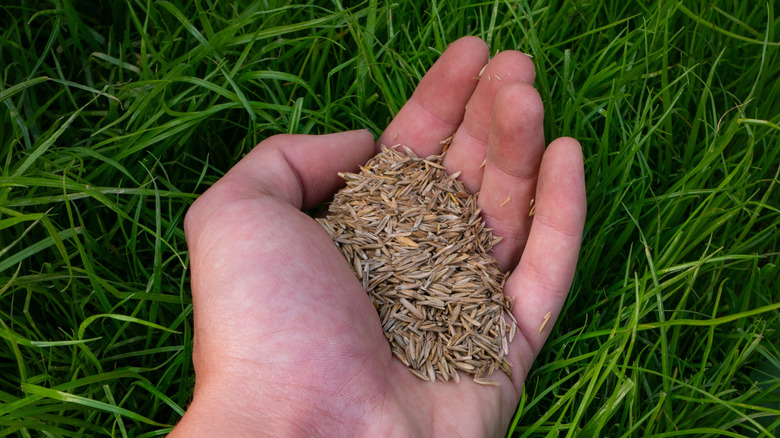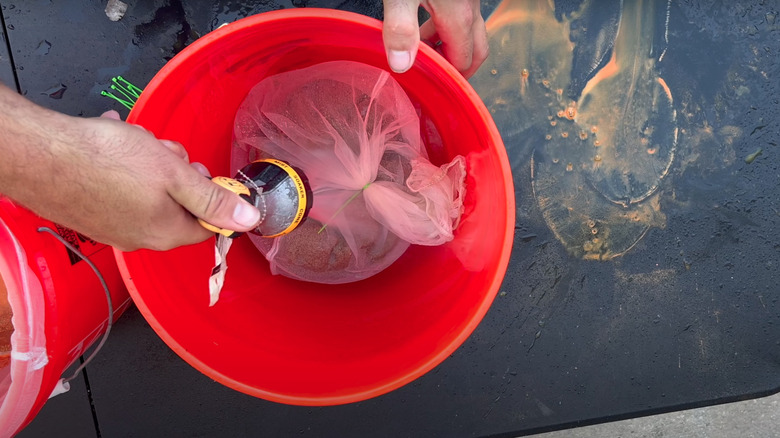How To Pre-Germinate Grass Seed (& Common Mistakes To Avoid)
One tip for growing grass seed fast is to pre-germinate your seeds. Pre-germinating is when you soak your seeds to get the germination process going before spreading them instead of laying dry seeds on the ground. Done correctly, this process speeds up the lawn-growing process. To properly pre-germinate your grass seed, calculate how much seed you'll need, soak the seeds, change that water regularly, stir your seeds, and spread them on your lawn at the proper time. While this might sound simple, some common errors you'll want to avoid include failing to check the weather, soaking the seeds too long, and leaving the soaked seeds in the same water through the pre-germination process.
First, decide which grass seeds you're planting. While you can pre-germinate different types of grass, the time of year you pick matters, since cool- and warm-season grasses should be planted at different times. For warm-season grasses like Bermuda grass and Zoysia, pre-germination and planting should start in late spring or early summer. Meanwhile, early fall is the ideal time to pre-germinate cool-season grasses like Kentucky bluegrass and perennial ryegrass. Once you've settled on a starting date, it's important to check the weather for the days when you'll to spread the pre-germinated grass in the soil. Heavy rains could delay your process, as could an unexpected frost. To time the seed distribution properly, you'll need to check the weather forecast regularly and know how long the seeds need to soak.
How to soak the seeds properly
The ideal pre-germination (i.e. soaking) duration depends on which grass species you're planting. For example, perennial ryegrass will need to pre-germinate for up to five days, whereas fescue seeds will need twice as much time in the water. As mentioned above, knowing the exact pre-germination duration will help you time the seed spreading date with the right weather. Also, soaking the seeds for too long could lead to the grass seeds' roots entangling, making planting more difficult if not impossible.
Once you have your seeds, you know how long they need to pre-germinate, and you've checked the weather forecast, it's time to soak. Determine how much grass seed you need for your area, put those seeds in a porous bag or sack (cheesecloth or a burlap sack will do), tie the container, and place it in a bucket filled with room temperature water. Keep your bucket in an area that will stay at around 70 degrees Fahrenheit. A common mistake is leaving the seeds in the same water for the entire process — doing so could halt the germination process. Changing the water every 12 hours or so gets rid of mold and germination inhibitors and introduces the fresh oxygen the seed needs to grow.
After the recommended soaking time has passed, check your seeds. If the seeds have little roots or fuzz on one end, it's time to spread them. Let the pre-germinated seeds dry slightly, mix them with a solid carrier like sand, corn cob particles, or Milorganite, and distribute them with a spreader.

